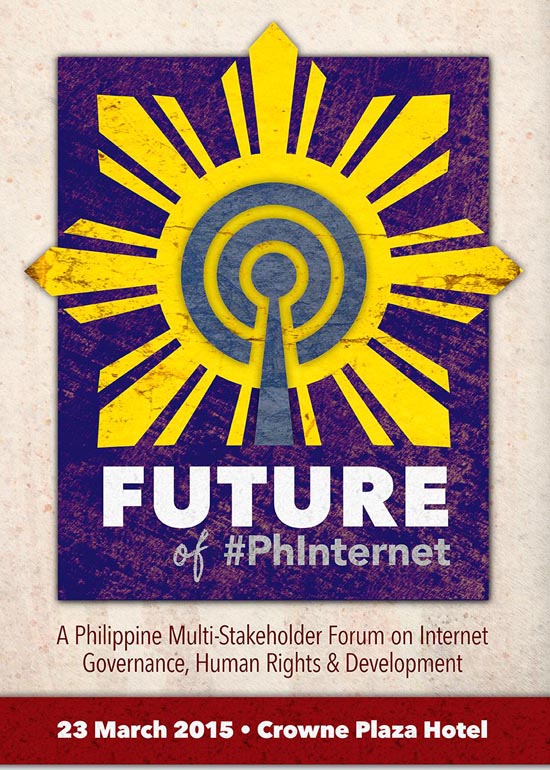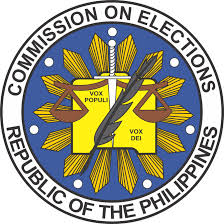If you are participating at the #RightsCon2015, Blog Watch is inviting you to our sessions
It’s full blast ahead for RightsCon SEA 2015 here in Manila, the first time the summit is held outside Silicon Valley! RightsCon is the premier summit series bringing together civil society, engineers, activists, lawyers, companies, and governments on the subject of the internet and human rights. This March 24 and 25, RightsCon will move to Manila to convene civil society and key decision makers in this rapidly evolving region. The RightsCon summits are dedicated to protecting the open internet and defending the digital rights of its users. Information about RightsCon sessions is available here.
We, in BlogWatch.ph, are excited to be part of this. If you’re attending the summit, we are inviting you to our sessions, as follows.
“Future of #PhInternet: A Philippine Multistakeholder Forum on Internet Governance, Human Rights, and Development”
March 23, 2015
Crowne Plaza Hotel
This satellite event is a space for stakeholders all over the Philippines – netizens, private sector, government officials, civil society, the tech community, bloggers, academics, journalists, lawyers, activists – to come together and start to build general consensus on what the future of the internet should be, as it approaches the 21st anniversary of #PHInternet.
Blog Watch is represented in the session “SOCIAL MEDIA@PH (Realities, Risks, Rights, Responsibilities)” with the following topics
1. Understanding Social Media @ PH: Overview of How the different stakeholders in the Philippines use social media
2. Governing Social Media – Analyzing current Policies and Practices
3. Human Rights in Social Media
4. Impacts of Social Media to Women and LGBTs
Social Media without the internet
March 24, 2015 at 11:30 AM
Emerald C, Crowne Plaza Hotel
Click here for the program
Blog Watch organized this session and will be the host and moderator.
Social media and mobile technology have taken Asia by storm. But in many Southeast Asian countries, the larger part of its citizens are NOT online. Disasters, erratic internet connections, and controlled access (government-imposed firewalls) to the internet are often part of life in this part of the world. How do you reach those who are offline and bridge the digital divide in emergency or critical situations? How can mission-critical information be trickled down to the people who need it most at the right time?
There are new forms of media platforms that allow citizens to reach across this digital divide, skirt the internet altogether, or engage with those who are offline to push crucial notifications, and seek important feedback. Audio, SMS, and other technology-based apps and platforms are surfacing and giving us alternative channels to communicate and disseminate.
This session will feature panel speakers who will recount actual stories of how their platforms were able to extend media reach to people who are offline or unable to connect to the internet. These stories will highlight how the different social media platforms aided information and news dissemination, public service, disaster rescue, and more.
Session attendees will have a chance to ask questions of the speakers during an open forum. In turn, it is hoped these will inspire attendees to think about how these platforms can apply to their own countries’ situations back home.
Speakers:
Marina Azcarate (Open Garden, Firechat)
Sameer Seth (Bubbly)
Lisa Kalenkiewicz (engageSPARK)
Rick Bahague (CPU)
Hashtag, Memes & more: Creative Communication Strategies for Advocacy”
March 25 at 10:40 Am
Emerald A, Crown Plaza Hotel.
Click here for the program.
In the age of social media, compelling communication strategies that interact with internet culture are essential for supporting effective advocacy campaigns. Designers and social media strategists can draw upon the latest theories of digital and social engagement to mobilize audiences and effect real change. But design becomes especially challenging across borders. Different countries and cultures share different vernaculars, including variances in language, tone, color, space, and even sense of humor and satire. Visual advocacy campaigns are not one-size-fits-all and even have the potential to subvert an otherwise well-intentioned cause.
Hosts:
Noemi Lardizabal-Dado – Blog Watch
Jane T. Uymatiao – Blog Watch
An Xiao Mina – The Civic Beat
Marek Tuszynski – Tactical Technology Collective




